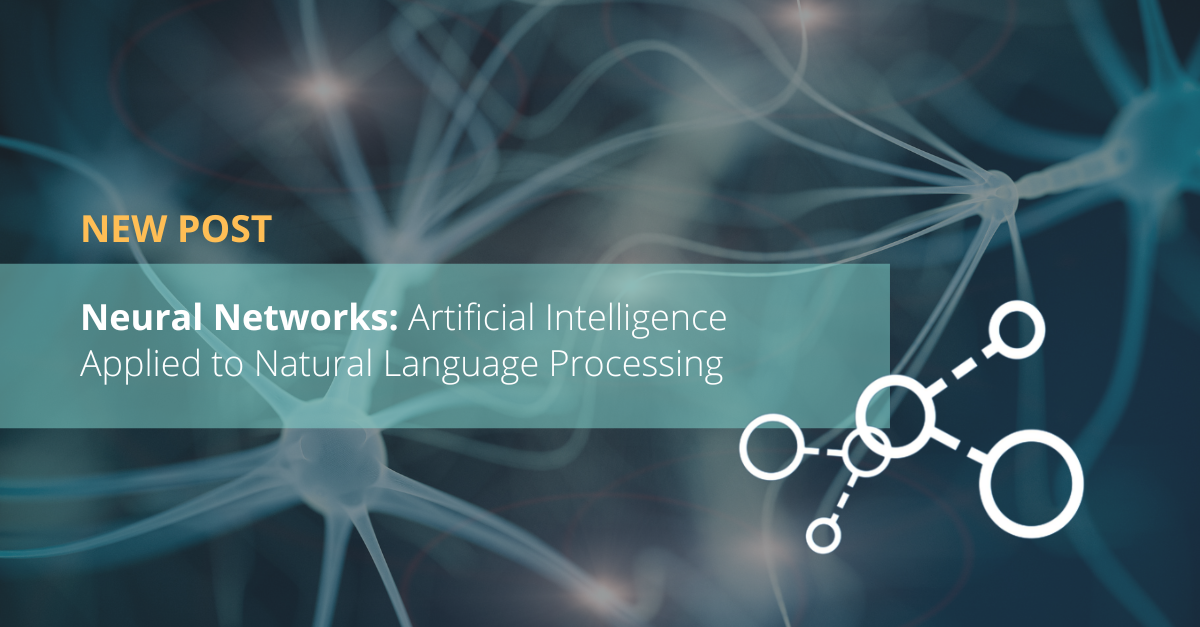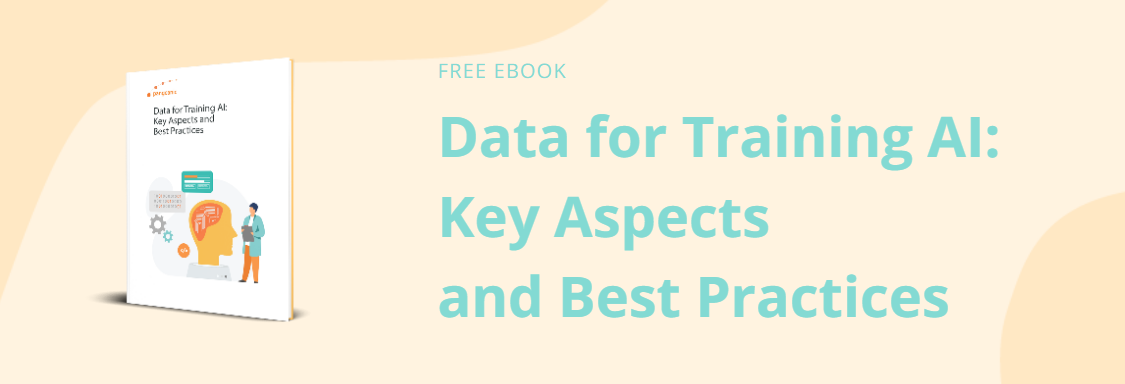
4 min read
23/02/2023
Neural Networks and How They Work in Natural Language Processing
The structure of a neural network works through a training process, known as deep learning, a subfield of machine learning. This is artificial intelligence (AI) technology applied to neuro-linguistic programming.
You may be wondering exactly what neural networks are and how are they used in Natural Language Processing (NLP).
What is a neural network?
Basically, a neural network is the modeling of how the human brain works when processing information. It is an adaptive system that, through training, learns and continuously improves to model relationships and patterns between data, provide solutions to complex problems and simulate natural language processing.
This network contains neurons or nodes (basic units) interconnected and organized in layers. There is an input layer, which receives the input data; one or more hidden layers, which propagate the data, and an output layer, which sends the result of the analysis or NLP.
More information:
How does a neural network work?
To emulate the human brain, a neural network examines the values or data it receives in its input layer, predicting and propagating a result. The input layer sends the data to the second layer, which then transmits it to the successive hidden layers.
In the second layer, the neurons or nodes detect and filter patterns of high relevance and combine the data. Each input value is assigned a weight that modifies the input weight. These resulting values are summed up and defined by a logistical or sigmoid function.
In subsequent hidden layers, the output of the previous layer is analyzed and processed in order to be transferred to the next layer. Then, in the output layer, values are recombined to achieve and propagate the result.
This system is based on the premise that in each set of parameters, there is a way to combine them to predict a certain result. It is the neural network that is responsible for achieving the best possible combination of parameters for a certain problem and applying it, that is, making the prediction and providing an output.
Types of neural networks
Depending on how the data flows or is transmitted from the input nodes to the output nodes, the following types of neural networks exist:
-
Feedforward neural networks: in this network structure, the data is processed in only one direction, from the input node to the output node.
-
Backpropagation neural networks: in this case, the values are also transferred from the input node to the output node, but take various paths in the network. Only one of these paths is correct and the network detects it through the operation of a feedback loop.
-
Convolutional neural networks: this type of network has several hidden layers trained to execute different and specific mathematical tasks, such as filtering or synthesis. They are very useful in image classification and recognition.
You may also be interested in:
How is a neural network trained?
A neural network is trained by performing the adjustment of input value weights on each node in its structure, in order to offer the most adjusted response to the problem. That is, a neural network is trained using a learning process.
Types of neural network learning
During training, the neural network can employ different learning methods:
-
Monitored or controlled learning: an external agent shows the system the patterns and the result to generate. In this way, the network will run calculations and combinations so that its output fits what is expected.
-
Unsupervised learning (no external influence): in this process, the output is unknown. The network is based only on the observations made on the input values.
-
Enhanced learning: in this learning mechanism, the network runs the analysis itself, but outputs are evaluated later. Each correct output is positively reinforced, while the wrong outputs are rejected.
-
Hybrid learning: this learning method combines the above mechanisms.

Common neural network uses
Neural networks are used in pattern recognition and classification, monitoring computer systems and robots, event prediction, sentiment analysis and data analysis. The most common uses are:
Computer vision
Neural networks are used to give computers “artificial vision”, i.e., the ability to distinguish images, in a manner similar to the human process. For example, systems in vehicles that recognize traffic signals or other road users.
Speech recognition
Various systems, such as automatic transcription software, virtual assistants or video subtitling programs use neural networks to analyze human voice, regardless of the language, tone or accent in which the person is speaking.
Natural language processing
Neural networks are also employed in natural language technology to enable computers to successfully perform the NLP process. In this way, texts or documents can be processed, information extracted and the meaning of the data determined.
For example, chatbots or sentiment analysis for social media comments.
How neural networks work in NLP
Neural networks have given NLP models a huge capacity for understanding and simulating human language. They have allowed machines to predict words and address topics that were not part of the learning process.
To achieve this performance in NLP processes, the neural networks must be trained with large amounts of documents (corpora) according to the type of text or language to be processed.
In NLP language models, neural networks act in the early stages, transforming vocabulary words into vectors. They act based on the principle that, in a text, the meaning of a certain word is associated with the words found around it.
These vectors are used in simple operations to provide reasonable results at the semantic level.
More information:
The benefits of using neural networks versus other methods
Using neural networks means employing a structure similar to the human brain, which offers benefits such as:
-
The learning method: neural networks learn by initial training, through examples that illustrate the tasks to be performed.
-
Self-organization: the networks organize what they learn.
-
Fault tolerance: in the event of partial damage, they can continue to respond.
-
Real-time operation: they have high transmission speeds.
-
Flexibility: they can process multiple changes to the information input.
More information:
How to boost your business with natural language processing (NLP)
At Pangeanic, we provide a complete and advanced neural machine translation service. We have developed and refined adaptive machine translation algorithms that translate hundreds of millions of words fluently, accurately, quickly and with near-human quality.
Our ECO platform has the ability to process over 400 language pairs in various formats (text documents, PDFs, PowerPoint files, spreadsheets, etc.). In addition, it has neural engines that are adapted to the tone, terminology, and sector of your company.
At Pangeanic, our NLP technology is state-of-the-art. Contact us. We will help you to optimize translation in your company.



